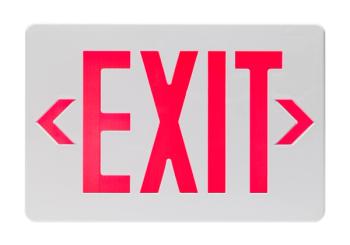
How ‘adjacent space’ acquisitions are changing the healthcare industry
Physicians and practices should keep a keen eye on healthcare mergers and acquisitions in order to serve their patients-and remain in business.
The healthcare payer industry has been consolidating for years, driven by the need to achieve greater scale and lower costs, and the desire of companies to acquire their way into growing businesses.
Traditionally, these efforts have been accomplished when payers acquire payers: Anthem’s acquisition of Amerigroup and Aetna’s acquisition of Coventry are good examples. Today, however, a combination of factors has caused a new consolidation model to emerge: horizontal or “adjacent space” acquisition. This is the combination of dissimilar companies that occupy different spaces in the overall healthcare value chain. The proposed CVS-Aetna, Cigna-Express Scripts, and Walmart-Humana combinations are all good examples of “adjacent space” acquisitions.
Why Now?
There are several reasons this type of consolidation is occurring. The U.S. Department of Justice blocking of the Anthem-Cigna and Aetna-Humana mergers in 2017 signaled that the traditional payer consolidation model had come to an end-or would at least be harder to complete in the current political and regulatory climate.
The shift to value-based care and consumerism also are drivers behind this change, causing companies to look for ways to own larger pieces of the value chain to enable them to administer value-based care models and bring customers a more complete, “healthcare on demand” experience. Think, for example, the value to CVS of owning Aetna, where Aetna can create insurance benefits and provider networks that will drive Aetna members into CVS’s retail pharmacies for both prescription drugs and, increasingly, healthcare treatment through CVS’s in-store primary care clinics.
The threat of nontraditional competitors entering the market, particularly Amazon, is also a driver behind this type of merger where companies are attempting to protect their businesses by owning a broader piece of the value chain, making it harder for an outside company like Amazon to displace them.
The potential combination of Walmart and Humana is particularly interesting when considered in light of Amazon. Humana is a market leader in the Medicare Advantage market. That same senior demographic shops at Walmart, and, at least at this point in time, are the lowest utilizers of online shopping services such as Amazon. The combination of Walmart and Humana solidifies the bond between the companies and senior consumers. It also provides the combined entity with the opportunity to broaden the products and services they can bring to the senior demographic, building loyalty before a company like Amazon tries to step in.
Once different entities merge, the combined organization gets more visibility into the lives of healthcare consumers and, as a result, more opportunity to fulfill the needs of those consumers across their healthcare journeys.
What Does This Mean for Physicians?
While these “adjacent space” agreements have the ability to transform the way healthcare is delivered, they also create the possibility of altering the day-to-day work experience for physicians and healthcare providers. Exactly how these new combinations will impact clinicians is still unknown, but it is a safe bet that there will be more network “channeling,” both directing and incenting healthcare consumers to engage with the owned portions of the healthcare value chain (e.g. Aetna members incented to seek care, prescriptions, and other medications at CVS).
This will be an opportunity for some physicians. Participating as “part of the chain” may drive increased patient volume and may bring both cost savings and business scale that a typical practice cannot achieve on its own. Those “outside the chain” may be at a disadvantage, finding themselves less appealing to potential patients, particularly as the shift of healthcare to a consumer/retail model continues to raise consumer expectations about how healthcare should be delivered (for example, online scheduling, 24/7 access to primary care, smartphone-based interactions, and telemedicine).
At the 2017 American Medical Association (AMA) State Legislative Strategy Conference,
Physicians have the opportunity to address how a merger may affect their patients, both positively and negatively. While the AMA viewpoint more than hints at potential trouble for physicians, it’s the responsibility of all stakeholders to have open, honest discussions throughout every phase of the process to ensure the results are fair, equitable, and best serve the needs of the patient.
Are We Done Yet?
Are these consolidations over? The answer appears to be “No.” I expect to see more of these combinations announced over the next several months as companies buy their way into the healthcare space or join with like-minded organizations that share a congruent business model and vision.
While these changes will continue for some time, it’s hard to say at this point what companies will be winners or losers. It’s likely that not all will survive, at least not in their current form.
- Some (perhaps many) will be part of these combinations, either by choice or necessity.
- Others will find themselves facing increased competition (or, very likely, a new style of competition) that forces them to adapt their business models or consolidate with a larger player in the market.
- Those that can’t adapt quickly or adjust their business model to compete likely will shrink or, in some cases, simply fail due to a lack of action, vision or innovation.
Determining the right path in the future is important for healthcare organizations. A misstep may be the difference between an assimilation or an alliance. For success, practices should seek assistance to shape and transform their business models . They should also adjust to compete in this changing market by utilizing new technologies, new strategies, and a new vision, all of which are required to disrupt the status quo and remain relevant.
Larry Bridge is senior vice president of strategy and corporate development at TriZetto Healthcare Products, a Cognizant Company.
Newsletter
Optimize your practice with the Physicians Practice newsletter, offering management pearls, leadership tips, and business strategies tailored for practice administrators and physicians of any specialty.









